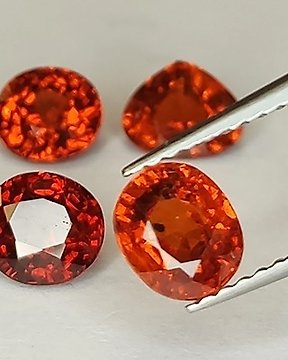
4 pcs Spessartine Garnet - 4.11 ct
Nr. 82978259

Nr. 82978259

A Baule Mouse Oracle, a male figure placed on an Akan stool in front of a container, touched by his hands, the vessel has two stages, which are connected with a hole, at the bottom a metal sheet, which is supposed to prevent the mouse from gnawing its way through the wood and thus seeking freedom, blackened surface with with strong abrasion. Certificate of origin and provenance.
"Inside this receptacle, a device composed of sticks records the movements of mice as signs that reveal insights into matters of importance. Mouse divination is said to be of Guro origin and is one of several divination techniques used in Baule society; it is practiced in eastern and central Côte d'Ivoire by Agni-speaking peoples, which include the Guro and Yaure. Regional oral traditions recount that in the distant past mice could speak. At that time they lived in the forest with the earth spirits (asye usu) until a spiritual specialist carried them into the village to be kept in captivity. Their natural proximity to the earth's surface and their ability to burrow beneath it permit mice to gain intimate access to the omniscient asye usu and the ancestors, thus enabling them to foretell events.
Specialists spend several years mastering this divination technique. Their training emphasizes on properly compensating the divinities and oracle for the enlightenment they provide, to ensure that they will remain favorably disposed. It also includes practical lessons on preparing medications and instruction in interpreting a vocabulary of visual signs. On becoming initiated into the secrets of the profession, the diviner is provided with his own mouse oracle (Gbekre) and may establish an independent practice.
The physical apparatus of the Gbekre is contained within a terracotta vessel inside a hollow wooden cylinder. A shelf divides the vessel into two distinct chambers, which are connected by a hole. The mice are placed in the lower chamber and pass through the hole into the upper chamber, in which the diviner has placed ten small sticks (originally, birds' or bats' bones were used). The small sticks, called Gbekre Nyma (literally, "eyes of the mice"), are coated with flour and attached at one end with fiber to the shell of an earth turtle. The actions of the mice in the upper chamber change the positions of the sticks, creating a new configuration that constitutes the sign to be translated by the diviner. Such reliance on interpreting actions of animals perceived to be innately endowed with insight into human experience is comparable to divination systems elsewhere, most notably spider divination in Cameroon.
Each morning and night, the diviner invokes the Gbekre, asking if it is satisfied and posing questions that concern him and questions concerning family members and clients. In preparation for a consultation, the mice are made to fast and placed in the lower chamber. The person who is consulting the oracle places a forefinger on the container's upper rim, invokes the Gbekre, and asks it the questions he or she would like answered. The diviner stands next to the client and accompanies each question by striking the oracle, an action that attracts the protective deity's attention and galvanizes the mice.
They feed on the flour that coats the sticks, rearranging them through their movements. The diviner explains the significance of the new configuration of the sticks according to fixed interpretations established over time for various patterns, such as "open path, favorable augury," "the consultant will receive a visit," "sickness," "death of a woman in the village," "successful labor," "unfavorable sign for a projected marriage" and "death of an individual in another village."
While functional Baule mouse oracles may be extremely rudimentary, their exterior surfaces are rarely physically damaged or worn and thus provide an ideal format for decorative enhancement. Such works frequently feature animal imagery, masks, or human heads carved lightly in relief; very occasionally, they are accompanied by figural statues carved entirely in the round and connected at the back or pubis." Source: Metropolitan Museum of Art.
Hvordan kjøpe på Catawiki
1. Oppdag noe spesielt
2. Legg inn det høyeste budet
3. Å gjøre en sikker betaling